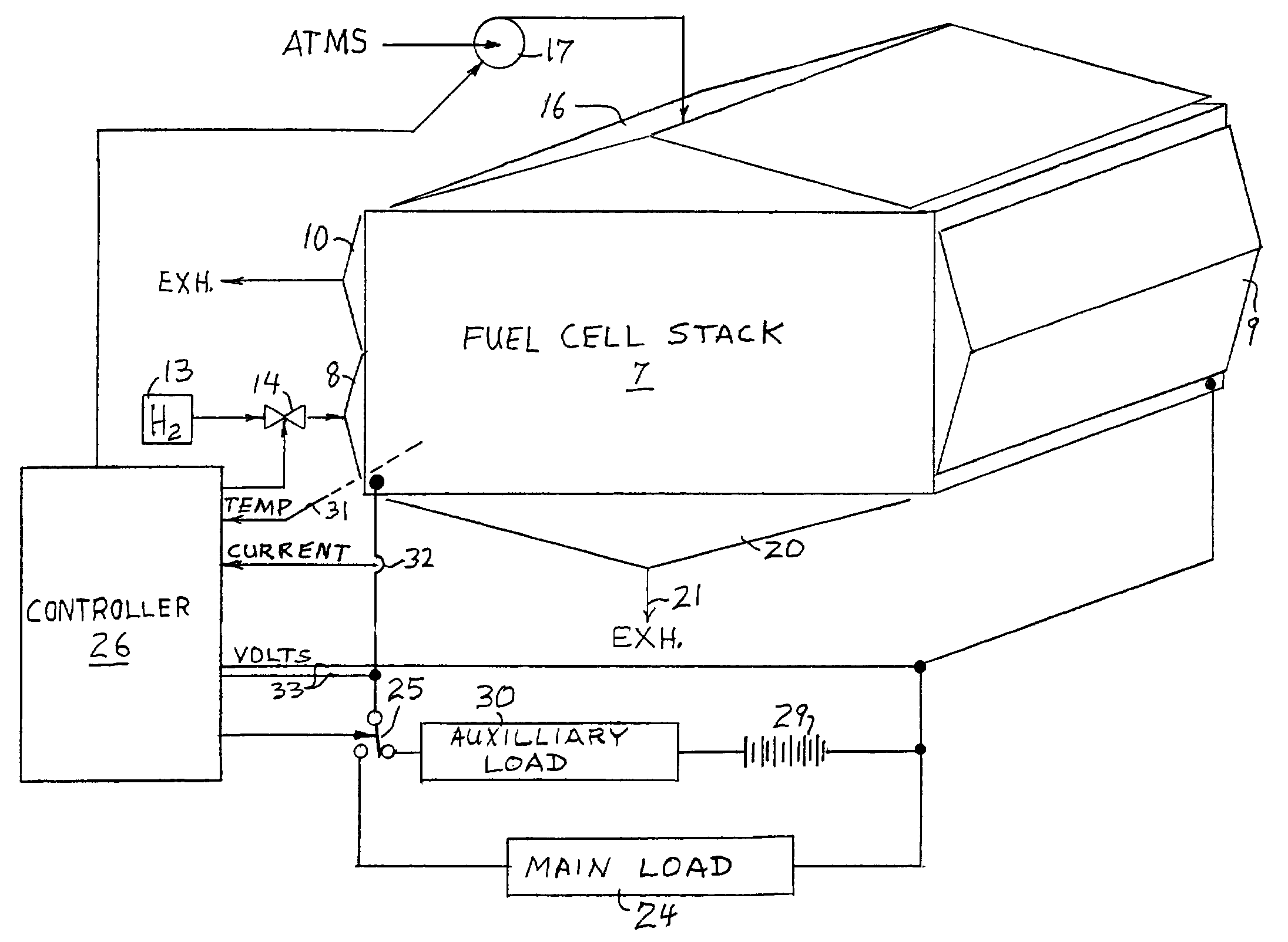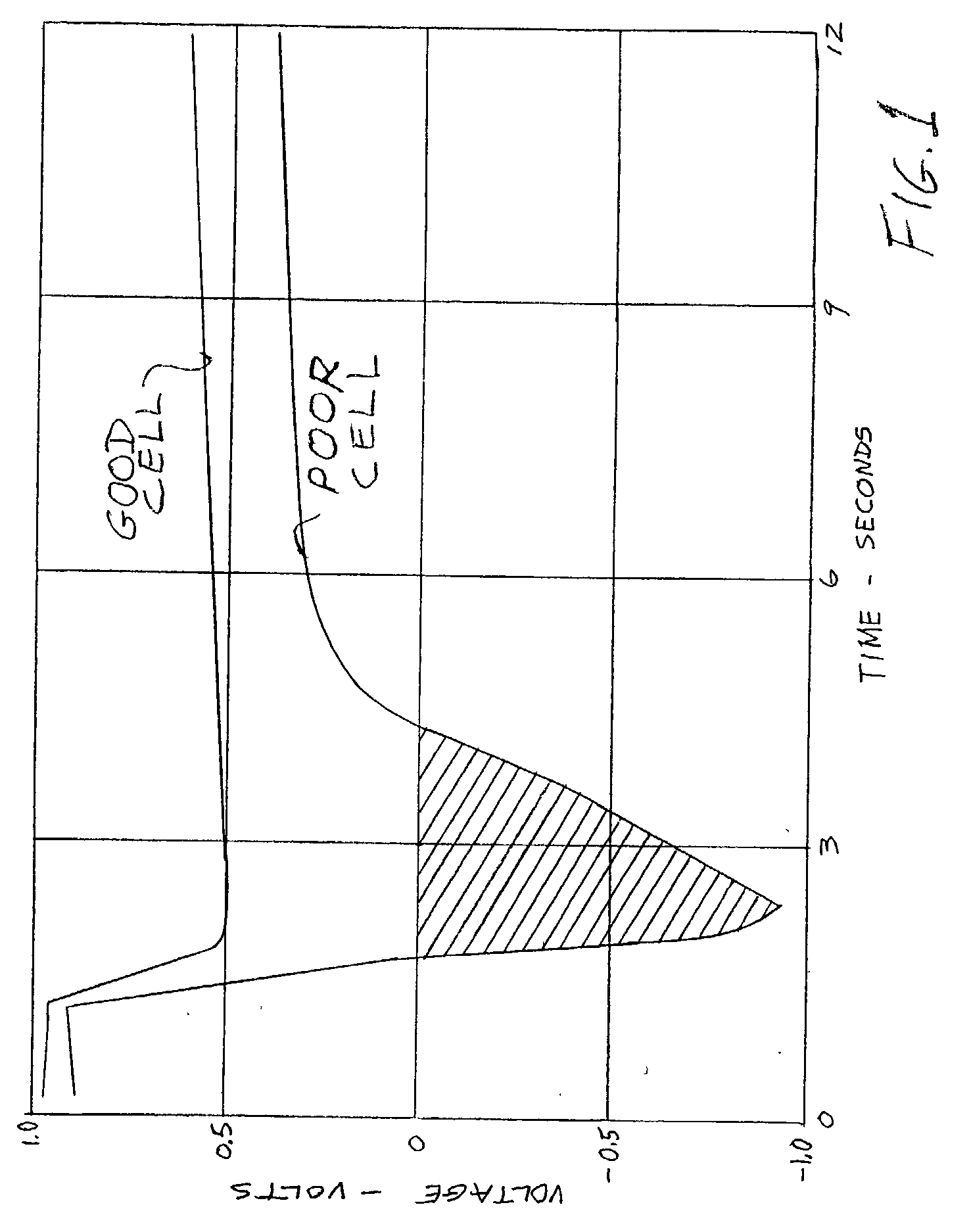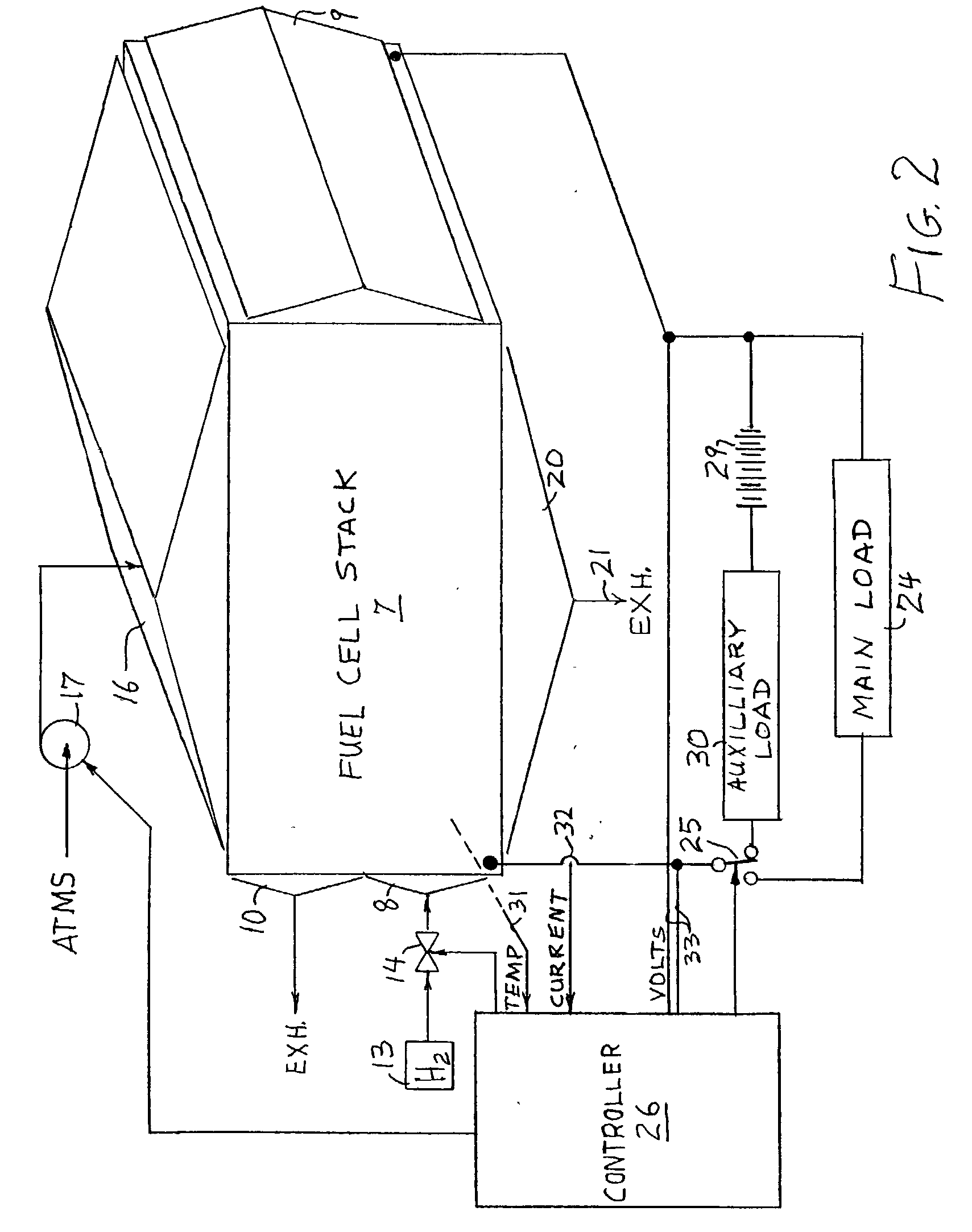Battery-Boosted, rapid startup of frozen fuel cell
- Summary
- Abstract
- Description
- Claims
- Application Information
AI Technical Summary
Benefits of technology
Problems solved by technology
Method used
Image
Examples
Embodiment Construction
[0014] A frozen fuel cell with an active area of 0.4 square feet, a Gore 5561 membrane electrode assembly obtained from W. L. Gore and Associates of Elkton, Md. with wettable cathode and anode substrates, no diffusion layer on the anode substrate, a 25 micron, 10% Teflon diffusion layer on the cathode substrate, and both anode and cathode water transport plates was started in accordance with the invention. In FIG. 1, the upper trace is of a good cell which is capable of producing electricity as soon as the reactants are provided thereto, and the lower trace is of a weak cell which, when reactants are applied to it, will have an inverse polarization, with the cathode going negative. FIG. 1 illustrates, that with the use of the present invention, the voltage in the weak cell remains negative for only about three seconds, and approaches positive 400 millivolts about only 10 seconds after application of hydrogen to the cells. Thus, the invention will permit reaching at least 30% of rate...
PUM
 Login to View More
Login to View More Abstract
Description
Claims
Application Information
 Login to View More
Login to View More - Generate Ideas
- Intellectual Property
- Life Sciences
- Materials
- Tech Scout
- Unparalleled Data Quality
- Higher Quality Content
- 60% Fewer Hallucinations
Browse by: Latest US Patents, China's latest patents, Technical Efficacy Thesaurus, Application Domain, Technology Topic, Popular Technical Reports.
© 2025 PatSnap. All rights reserved.Legal|Privacy policy|Modern Slavery Act Transparency Statement|Sitemap|About US| Contact US: help@patsnap.com



